WHADDON-Wilma
WHADDON VILLAGE
This is a personal profile of Whaddon Village created for the Living Archive course (LAC) which I recently completed. Having moved to the village three years ago I knew some minor details about the area but not enough to provide a full picture of it’s history. Following on from an internet search I started taking photographs of the village landmarks but it wasn’t until I met local villagers that I was able to learn more from them. I am extremely grateful to the proud residents of Whaddon who provided me with their extensive historical knowledge that I have documented in this profile.
The village named sign is situated on the High Street and reflects its Anglo Saxon origin which means “the hill where wheat is grown”. The village is at the centre of the ancient Whaddon Chase which for many centuries was the site for royal hunting lands and is designated an area of “Special Landscape Interest”. The population census in 1712 recorded 500 inhabitants (1) not dissimilar to the 2014 census which recorded 533 inhabitants.
Alongside is another sign post which shows the distance between other villages in the surrounding area. Whaddon is part of the Aylesbury Vale Buckingham district with a Milton Keynes postcode.
The situation of Whaddon has implications for the building of future housing plans for the new town of Milton Keynes and Aylesbury Vale District Council. Plans have been drawn up much to the distress of local villagers as it may end their village environment. One of the senior members of Whaddon said
“I don’t want our village to be swamped like Shenley and other villages that are now gone”
The Whaddon Parish Council is in discussion regarding the Issues and Options for the Local Plan for an extra 31,000 homes from now until 2033, highlighting the drastic effects it will have on the rural landscapes and unique historic Whaddon Valley.(2)
The routes surrounding Whaddon are popular with cyclists and walking groups. However the main roads through the village are used as a thoroughfare for heavy traffic that is especially busy at peak times. Despite the addition of traffic calming measures and a limited 30 mph speed limit it has had little effect. One villager commented,
“I am glad we have double glazing as the noise from the big Lorries that thunder through the village is tremendous. We used to be able to play outside but sadly that past time has now gone.”
Examples of some of the older houses in Whaddon
Thatched cottage The only one left in the village and is much admired for its authenticity.
Laburnum Cottage which was previously a pub and is now a residential property across from the village green. The tree on the left of the picture has beautiful blossoms in the summer. Previously it was one of the four village pubs and was known as the Fox and Hounds.
Village Churches
St Mary’s Church dates from the 12th Centurywith added extensions and restoration over the years. More recent the Tower was restored in 1902 and the Nave in 1906.
The Bell tower has 6 bells in situ dating back to the 16th century and can be heard every Tuesday night when the bell ringers are practicing. Weddings, funerals and church services are also heralded by the pealing bells.
“The bell ringers stated they need new people to join and keep the bells ringing as the average age range of our current members is 65years. We need new younger members to join us otherwise there will be a silent bell tower! ”
The same can be said of the churches congregation which has declined over the years. There is a small core of people who attend on a regular basis and others who attend at special events for example at Easter or Christmas. There is one female Vicar who shares her duties with other parishes.
There is always fund raising activities taking place for the church throughout the year from coffee mornings, music evenings and garden parties. This helps with running costs and expenses. It can also be used as an enticement to encourage younger people to join the church congregation.
“One parishioner described his experience as a young man in the early sixties helping his dad to light and stoke the coal fired church boiler on a Saturday night in preparation for the Sunday service.”(3)
The Whaddon Independent Congregational Church
The Whaddon Chapel was built in 1898 and is described as one of the dwindling numbers of Congregational churches in Britain (1) It’s non conformist practices were introduced to the village in 1831 when it was thought the moral state of villagers were lacking. This was in contrast to the St Mary’s Anglican Protestant ideology.
This is not the case nowadays as the two churches would appear to be united in their practices. Their church services are held at different times as they often share the same congregation and there are regular meetings and discussions between the church leaders.
“Villagers remembered life in the village during the Second World War when evacuees from London were schooled in the church classroom.
Initially the village children were taught in the morning and the evacuees in the afternoon at the village school. It was then thought that the teaching was too disruptive and the village children were losing out. The decision to return to full time education was not always popular with the pupils.”
In conclusion
I have found that in doing this project I have discovered an abundance of information regarding the village and its inhabitants. It has been a fascinating insight into the history of Whaddon and I got to know more about the village where I now reside. Features that I once passed became more interesting and with this new knowledge I was able to pass it onto my grandchildren who now regard their village in a different light.
Bibliography
(1) Whaddon Quarterly November 2015
(2) Whaddon Quarterly Millennium Edition 2000
(3) Whaddon Quarterly Winter 2003
My special thanks go to Evelyn and her daughters Sally and Susan
also
Susan and Margaret, WI members who make delicious cakes for the Tuesday afternoon village soirées as this is where I obtained most of my information and references from my discussions with the villagers.
WHADDON VILLAGE
This is a personal profile of Whaddon Village created for the Living Archive course (LAC) which I recently completed. Having moved to the village three years ago I knew some minor details about the area but not enough to provide a full picture of it’s history. Following on from an internet search I started taking photographs of the village landmarks but it wasn’t until I met local villagers that I was able to learn more from them. I am extremely grateful to the proud residents of Whaddon who provided me with their extensive historical knowledge that I have documented in this profile.
The village named sign is situated on the High Street and reflects its Anglo Saxon origin which means “the hill where wheat is grown”. The village is at the centre of the ancient Whaddon Chase which for many centuries was the site for royal hunting lands and is designated an area of “Special Landscape Interest”. The population census in 1712 recorded 500 inhabitants (1) not dissimilar to the 2014 census which recorded 533 inhabitants.
Alongside is another sign post which shows the distance between other villages in the surrounding area. Whaddon is part of the Aylesbury Vale Buckingham district with a Milton Keynes postcode.
The situation of Whaddon has implications for the building of future housing plans for the new town of Milton Keynes and Aylesbury Vale District Council. Plans have been drawn up much to the distress of local villagers as it may end their village environment. One of the senior members of Whaddon said
“I don’t want our village to be swamped like Shenley and other villages that are now gone”
The Whaddon Parish Council is in discussion regarding the Issues and Options for the Local Plan for an extra 31,000 homes from now until 2033, highlighting the drastic effects it will have on the rural landscapes and unique historic Whaddon Valley.(2)
The routes surrounding Whaddon are popular with cyclists and walking groups. However the main roads through the village are used as a thoroughfare for heavy traffic that is especially busy at peak times. Despite the addition of traffic calming measures and a limited 30 mph speed limit it has had little effect. One villager commented,
“I am glad we have double glazing as the noise from the big Lorries that thunder through the village is tremendous. We used to be able to play outside but sadly that past time has now gone.”
Examples of some of the older houses in Whaddon
Thatched cottage The only one left in the village and is much admired for its authenticity.
Laburnum Cottage which was previously a pub and is now a residential property across from the village green. The tree on the left of the picture has beautiful blossoms in the summer. Previously it was one of the four village pubs and was known as the Fox and Hounds.
Village Churches
St Mary’s Church dates from the 12th Centurywith added extensions and restoration over the years. More recent the Tower was restored in 1902 and the Nave in 1906.
The Bell tower has 6 bells in situ dating back to the 16th century and can be heard every Tuesday night when the bell ringers are practicing. Weddings, funerals and church services are also heralded by the pealing bells.
The bell ringers stated they need new people to join and keep the bells ringing as the average age range of our current members is 65years. We need new younger members to join us otherwise there will be a silent bell tower!
The same can be said of the churches congregation which has declined over the years. There is a small core of people who attend on a regular basis and others who attend at special events for example at Easter or Christmas. There is one female Vicar who shares her duties with other parishes.
There is always fund raising activities taking place for the church throughout the year from coffee mornings, music evenings and garden parties. This helps with running costs and expenses. It can also be used as an enticement to encourage younger people to join the church congregation.
One parishioner described his experience as a young man in the early sixties helping his dad to light and stoke the coal fired church boiler on a Saturday night in preparation for the Sunday service. (3)
The Whaddon Independent Congregational Church
The Whaddon Chapel was built in 1898 and is described as one of the dwindling numbers of Congregational churches in Britain (1) It’s non conformist practices were introduced to the village in 1831 when it was thought the moral state of villagers were lacking. This was in contrast to the St Mary’s Anglican Protestant ideology.
This is not the case nowadays as the two churches would appear to be united in their practices. Their church services are held at different times as they often share the same congregation and there are regular meetings and discussions between the church leaders.
Villagers remembered life in the village during the Second World War when evacuees from London were schooled in the church classroom.
Initially the village children were taught in the morning and the evacuees in the afternoon at the village school. It was then thought that the teaching was too disruptive and the village children were losing out. The decision to return to full time education was not always popular with the pupils.
In conclusion
I have found that in doing this project I have discovered an abundance of information regarding the village and its inhabitants. It has been a fascinating insight into the history of Whaddon and I got to know more about the village where I now reside. Features that I once passed became more interesting and with this new knowledge I was able to pass it onto my grandchildren who now regard their village in a different light.
Bibliography
(1) Whaddon Quarterly November 2015
(2) Whaddon Quarterly Millennium Edition 2000
(3) Whaddon Quarterly Winter 2003
My special thanks go to Evelyn and her daughters Sally and ?,
also
Susan and Margaret, WI members who make delicious cakes for the Tuesday afternoon village soirées as this is where I obtained most of my information and references from my discussions with the villagers.
Wilma G. Beckett
14th February 2016


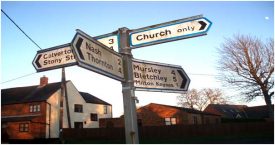
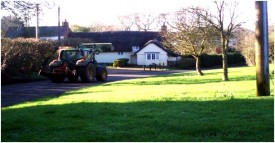
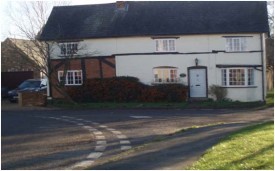
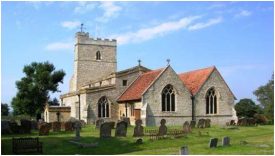
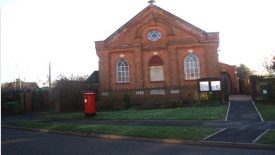




No Comments
Add a comment about this page